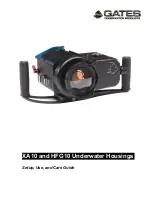
51
Applicable chainring
tooth configurations
Main applicable sprockets
tooth number
configuration
Largest chainring : 56, 55, 54, 53, 52, 50
11-21T : 11-12-13-14-15-16-17-18-19-21T
11-23T : 11-12-13-14-15-16-17-19-21-23T
11-25T : 11-12-13-14-15-17-19-21-23-25T
11-27T : 11-12-13-14-15-17-19-21-24-27T
11-28T : 11-12-13-14-15-17-19-21-24-28T
12-23T : 12-13-14-15-16-17-18-19-21-23T
12-25T : 12-13-14-15-16-17-19-21-23-25T
12-27T : 12-13-14-15-16-17-19-21-24-27T
Intermediate chainring : 42, 39, 34
Smallest chainring : 30
50
14. Main Specifications/Display Ranges
Heart rate
30 - 240 bpm (beats per minute)
Traveling distance
0.00 - 9999.99 (km, miles)
Cumulative distance
0.0 - 99999.9 (km, miles)
Longest traveling time
99 : 59 : 59
Average speed
0.0 - 130.0 km/h 0.0 - 80.8 mph
Cadence
0 - 299 rpm
Altitude
-550 - 9000 m
Tire circumference
1300 - 2400 mm
Calorie consumption
0 - 99,999 kcal
Battery/life
Approximately one year (300 days when used for 1 hour per
day and PC-LINK used once a week)
* This may be shorter depending on the operating
environment, the PC-LINK frequency and other conditions.
Specified operating
temperature range
0°C - 50°C
Handlebar installation
diameter
31.8 mm / 25.8 mm (Using an adapter)
This device complies with Part 15 of the FCC Rules. Operation
is subject to the following two conditions: (1) this device may
not cause harmful interference, and (2) this device must
accept any interference received, including interference that
may cause undesired operation.
This equipment has been tested and found to comply with
the limits for a Class B digital device, pursuant to Part 15 of
the FCC Rules. These limits are designed to provide
reasonable protection against harmful interference in a
residential installation. This equipment generates, uses and
can radiate radio frequency energy and, if not installed and
used in accordance with the instructions, may cause harmful
interference to radio communications. However, there is no
guarantee that interference will not occur in a particular
installation. If this equipment does cause harmful
interference to radio or television reception, which can be
determined by turning the equipment off and on, the user is
encouraged to try to correct the interference by one or more
of the following.
measures:
--- Reorient or relocate the receiving antenna.
--- Increase the separation between the equipment and
receiver.
--- Connect the equipment into an outlet on a circuit
different from that to which the receiver is connected.
--- Consult the dealer or an experienced radio/TV technician
for help.


































